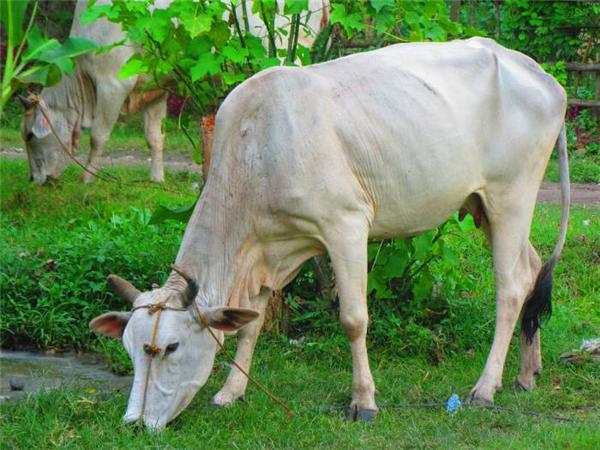
Backyard cattle fattening is a profitable small-scale livestock enterprise in the Philippines. It provides farmers with a sustainable income while supporting the country’s beef supply. With the increasing demand for high-quality beef, adopting modern, research-backed strategies is crucial to maximize profits and ensure sustainable farming.
This guide presents the latest in feeding techniques, housing systems, genetic improvement programs, and marketing strategies to help Filipino farmers succeed in cattle fattening.
Types of Cattle Raising in the Philippines
Cattle raising is classified into three main operations:
- Cow-Calf Operation – Producing calves for breeding or further growth.
- Breeder Farm Operation – Raising cattle to improve genetics and breeding potential.
- Growing-Fattening Operation – Raising cattle to optimal weight for meat production.
Each method has distinct management requirements, but fattening operations offer the fastest returns for backyard farmers.
Cow-Calf Operation: Producing Quality Calves
In this system, cows give birth to calves, which are raised until they are ready for breeding or fattening. The key factors include:
✅ Breeding Management: Select high-quality bulls and cows to ensure strong genetics.
✅ Colostrum Feeding: Ensure calves receive colostrum within 3 hours after birth to boost immunity.
✅ Health Program: Vaccinate against Foot-and-Mouth Disease (FMD) and Hemorrhagic Septicemia for disease prevention.
📌 Early weaning at 6 months improves feed efficiency and weight gain in well-managed operations. (Source: Philippine Journal of Veterinary and Animal Sciences)
Breeder Farm Operation: Enhancing Genetics for Superior Beef Quality
Breeder farms focus on producing high-quality cattle for genetic improvement. Farmers investing in this system benefit from:
✅ Artificial Insemination (AI): Increases breeding efficiency and controls genetics.
✅ Crossbreeding Programs: Improves growth rates and meat quality.
✅ Pasture Management: Combining livestock with agroforestry for better land use.
📌 Artificial Insemination (AI) has a conception rate of 70–80%, higher than natural mating at 50–60%. (Source: Department of Agriculture, Philippines)
Growing-Fattening Operation: The Most Profitable Approach
Backyard farmers typically focus on growing-fattening operations due to shorter production cycles and high ROI. Cattle are raised using:
- Grazing systems: Allowing cattle to feed on natural pastures.
- Cut-and-Carry feeding: Farmers provide harvested grass and mixed feeds.
- Intensive fattening: Cattle are confined and fed high-energy diets.
Optimal Feeding Strategy for Maximum Weight Gain
✅ High-Energy Diet: Includes rice bran, corn silage, molasses, and copra meal.
✅ Protein Supplements: Leguminous fodder like ipil-ipil and madre de agua boosts growth.
✅ Mineral & Vitamin Supplements: Calcium, phosphorus, and salt improve digestion and bone health.
📌 Fermented Total Mixed Ration (FTMR) increases average daily gain (ADG) by 15–20% and lowers feed costs. (Source: Bureau of Animal Industry, Philippines)
Selecting the Best Cattle for Breeding and Fattening
Proper selection ensures high-quality meat production and breeding success.
Choosing Cows & Heifers for Breeding
✅ Good Milking Ability – Soft, flexible teats indicate strong maternal traits.
✅ Optimal Age – 3 to 8 years old for best fertility rates.
✅ Genetic Lineage – Cattle from strong bloodlines grow faster and healthier.
Choosing Bulls for Breeding
✅ Strong Build – Broad chest, muscular thighs, and large nostrils indicate good health.
✅ Reproductive Potential – Large, well-developed testicles and a deep chest ensure high fertility.
Choosing Cattle for Fattening
✅ Ideal Age – 1.5 to 2 years old for efficient weight gain.
✅ Calm Temperament – Less stress means better feed conversion.
✅ Good Body Structure – Wide chest and well-sprung ribs signal high feed efficiency.
📌 Crossbreeding Brahman and native cattle increases daily weight gain by 25% due to hybrid vigor. (Source: ScienceDirect)
Updated Feeding and Nutrition Guidelines for Cattle Fattening
💡 Best Practices
✅ Concentrate Feeding – Provide 1–2 kg per day during the fattening period.
✅ Roughage Feeding – Supply 3% of body weight (dry matter) or 14% (fresh weight) daily.
✅ Unlimited Clean Water – Ensure cattle drink 50–80 liters per day for optimal digestion.
📌 Hydroponic fodder (sprouted grains) increases weight gain by 25% and reduces feed costs by 30%. (Source: PubMed Central)
Cattle Housing and Farm Management for Maximum Productivity
Providing proper shelter ensures cattle remain stress-free and productive.
Recommended Housing Setup
✅ Shed Height – 3 meters for good ventilation.
✅ Flooring – Concrete and sand prevent mud buildup.
✅ Ventilation – At least 1-foot clearance between walls and floor for airflow.
📌 Using cogon/nipa roofing instead of galvanized iron reduces heat stress by 10%, leading to better feed intake. (Source: Philippine Carabao Center)
Marketing Strategies for Maximum Profit
With beef demand rising, farmers must use smart marketing techniques to boost profits.
Best Cattle Marketing Practices
✅ Sell by Weight, Not by Head – Ensures fair pricing and higher returns.
✅ Direct Selling – Reduces middlemen, increasing farmer profits.
✅ Target Premium Markets – Organic and grass-fed beef command higher prices.
📌 Online livestock trading platforms help farmers connect with buyers, cutting transport costs by 20%. (Source: DA-Agribusiness and Marketing Assistance Service)
Final Thoughts: The Future of Backyard Cattle Fattening
Backyard cattle fattening remains a lucrative opportunity for Filipino farmers. By adopting modern feeding techniques, genetic improvement programs, and effective marketing strategies, farmers can ensure long-term profitability and sustainable beef production.
Key Takeaways
✅ Use FTMR and hydroponic fodder for faster weight gain.
✅ Improve cattle genetics through AI and crossbreeding.
✅ Optimize housing with natural roofing to reduce heat stress.
✅ Leverage digital platforms for direct selling and better profits.


Great article. However, please edit that Cattle Housing System. Thanks
nice one…. no need to work abroad.
thanks for this article its very useful.
mmmmp
This article is truly useful, succinctly gives you the information you need for starting up.
informative..
Great article! If you invest in an adult cattle today, how many years will it take for the investment to return?